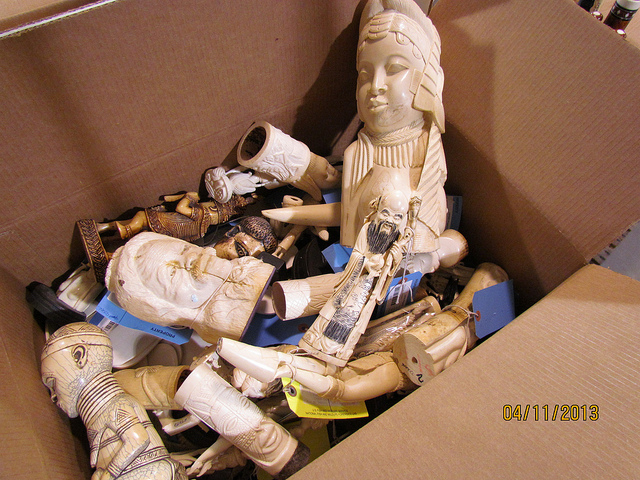US to Destroy 6 Tons of Ivory This Week

In a first, U.S. officials are going to destroy their massive stockpile of illegal ivory this week, hoping to send a zero-tolerance message to elephant poachers.
On Thursday (Nov. 14), the U.S. Fish and Wildlife Service (FWS) will pulverize nearly 6 tons (5.4 tonnes) of illegal ivory items, from whole tusks to tiny trinkets, which have been seized over the past 25 years as a result of smuggling busts and criminal investigations.
The ivory crush will take place at the Rocky Mountain Arsenal National Wildlife Refuge in Commerce City, Colo., just outside of Denver.
Seized ivory is typically kept as evidence until criminal cases are over. After that, the objects can be used to educate the public and train law enforcement officials. But FWS officials say that since the 1980s they have collected far more ivory than they need to fulfill those purposes. Thursday's event will mark the first time such a large amount of ivory is being destroyed in the United States.
"Destroying this ivory tells criminals who engage in poaching and trafficking that the United States will take all available measures to disrupt and prosecute those who prey on and profit from the deaths of these magnificent animals," FWS officials said in a fact sheet.
The Convention on International Trade in Endangered Species of Wild Fauna and Flora (CITES) banned the international ivory trade in 1989. But a CITES report published last year found that elephant poaching was at its highest level in a decade and rising.
FWS officials say they are working with the Association of Zoos and Aquariums to develop "a creative and informative use" of the crushed ivory, with a goal to educate the public about poaching.
Sign up for the Live Science daily newsletter now
Get the world’s most fascinating discoveries delivered straight to your inbox.
The ivory crush was initially scheduled to take place in October, but it was postponed due to the government shutdown.
Follow Megan Gannon on Twitter and Google+. Follow us @livescience, Facebook & Google+. Original article on LiveScience.










